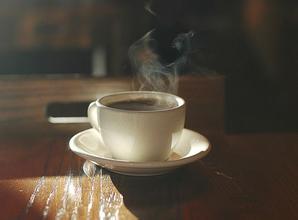Description and treatment of Flavor of boutique Pacamara Coffee Bean Variety characteristics and taste manor
It has a positive effect on coffee aroma. In 2005, the Salvadoran hybrid Pacamara swaggered at the coe, leaving many international cup testers confused and wondering how to grade it. Unexpectedly, this hybrid bean not only broke the boundaries of coffee, but also expanded the visibility of Salvadoran coffee.
Salvadoran fine coffee is concentrated in Santa Ana in the west and Charantan Nango volcanic rock producing areas in the northwest. Almost all of the top ten in the cup test in recent years come from these two producing areas. The altitude is about 900-1500 meters. Bourbon is the main one (accounting for 68%), followed by Pacas (accounting for 29%). Mixed Pacamara, Duraai and Kadura only account for 3%.
Pacas coffee is a Pacas coffee found in El Salvador in the 1950s.
Hybrids with giant bean Maragogype(sudden variant of tibica species found in Brazil).
Coffee trees are tall, with branches wider spaced than Pacas,
Dark green leaves with wavy edges
Cultivation is suitable for elevation 900~1500 meters,
The higher the planting landmark, the better the quality,
Because the harvest yield is not high, the cultivation amount is also very small.
El Salvador, Honduras, Nicaragua, etc. have state-owned cultivation.
There's yellow Pakamara.

Important Notice :
前街咖啡 FrontStreet Coffee has moved to new addredd:
FrontStreet Coffee Address: 315,Donghua East Road,GuangZhou
Tel:020 38364473
- Prev

Introduction to the taste characteristics of Colombian coffee bean varieties treated with flavor
The pure taste of Colombian coffee comes from Colombia's natural environment with the most favorable conditions for coffee growth. But beyond that, it is inseparable from the hard work of local growers. In Colombia, coffee cultivation has reached 1.07 million hectares, there are about 302000 coffee plantations in the country, and 30 to 40 per cent of the rural population depends directly on coffee production. Columby
- Next

Introduction to the variety of taste grinding degree of Colombian Ramon coffee bean by characteristic flavor description treatment
Colombian Ramon coffee flavor description treatment method introduces that in many parts of Colombia, the elevation is between 1200 meters and 1800 meters, and the annual rainfall is about 2000 millimeters. Sufficient sunshine and rainfall are very suitable for coffee growth. In recent years, however, Jos é Ramon Corazos, who lives in the southern province of Uila, has gradually discovered that there is less and less coffee on his plantation, which is one of the most important factors.
Related
- Detailed explanation of Jadeite planting Land in Panamanian Jadeite Manor introduction to the grading system of Jadeite competitive bidding, Red bid, Green bid and Rose Summer
- Story of Coffee planting in Brenka region of Costa Rica Stonehenge Manor anaerobic heavy honey treatment of flavor mouth
- What's on the barrel of Blue Mountain Coffee beans?
- Can American coffee also pull flowers? How to use hot American style to pull out a good-looking pattern?
- Can you make a cold extract with coffee beans? What is the right proportion for cold-extracted coffee formula?
- Indonesian PWN Gold Mandrine Coffee Origin Features Flavor How to Chong? Mandolin coffee is American.
- A brief introduction to the flavor characteristics of Brazilian yellow bourbon coffee beans
- What is the effect of different water quality on the flavor of cold-extracted coffee? What kind of water is best for brewing coffee?
- Why do you think of Rose Summer whenever you mention Panamanian coffee?
- Introduction to the characteristics of authentic blue mountain coffee bean producing areas? What is the CIB Coffee Authority in Jamaica?

